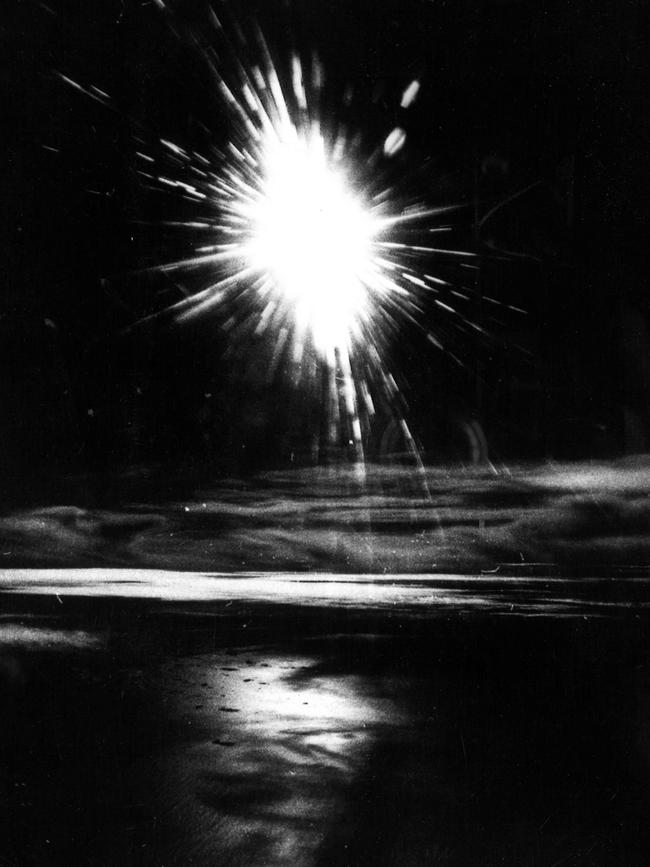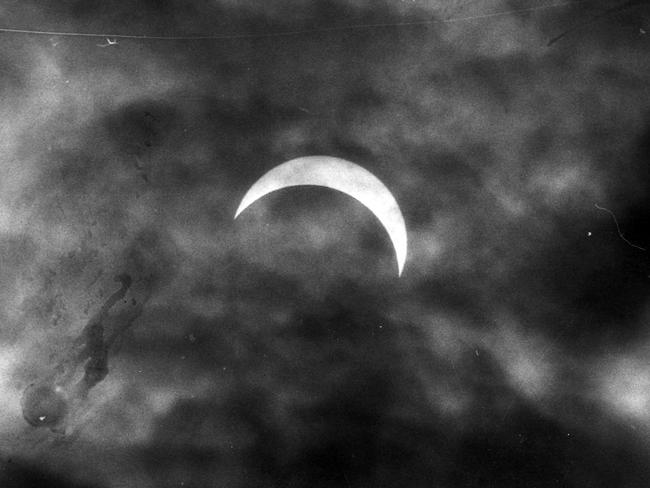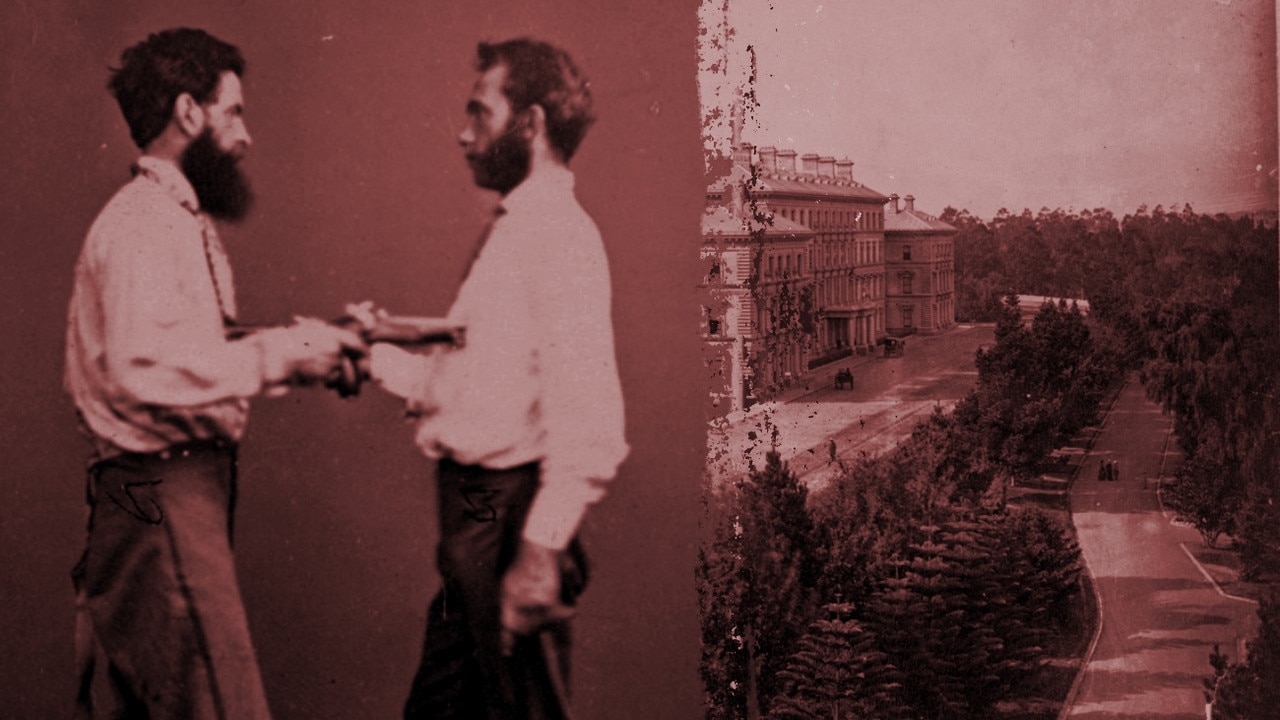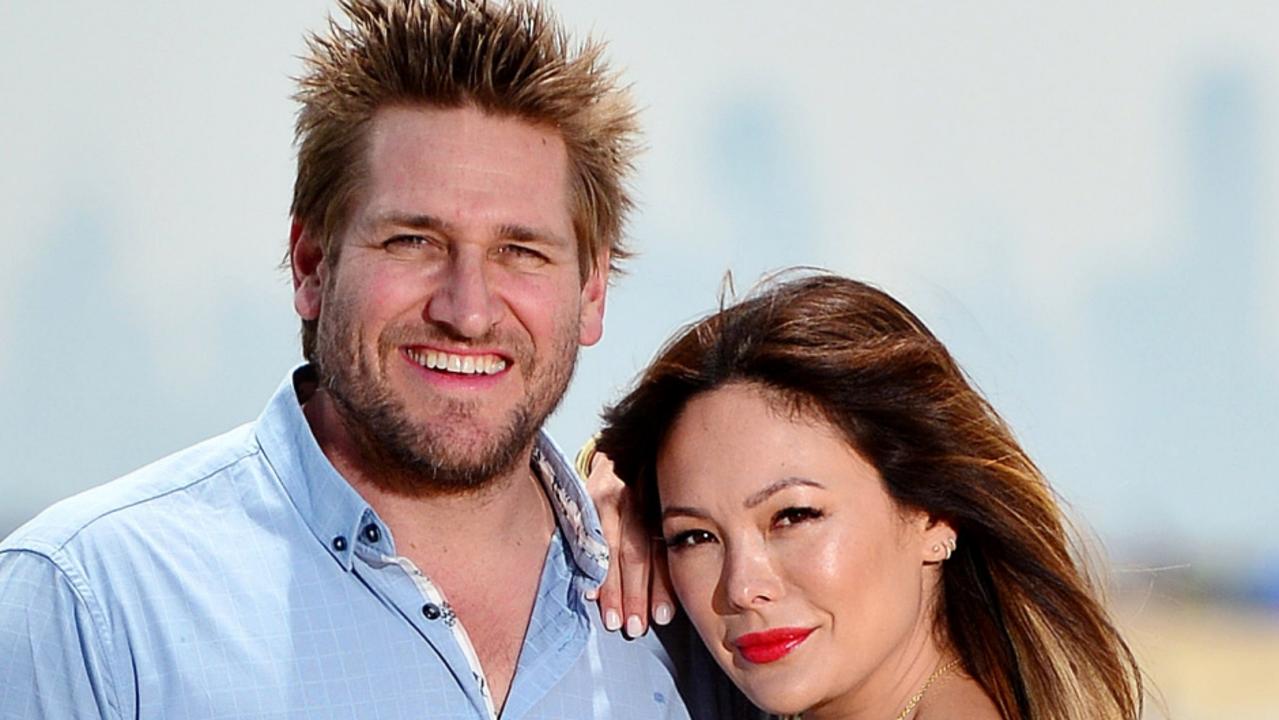Total solar eclipse in Victoria in 1976 won’t be seen again for years
IT lasted just a couple of minutes, but the total solar eclipse that swept across Victoria 40 years ago was a once-in-a-lifetime event.

Melbourne
Don't miss out on the headlines from Melbourne . Followed categories will be added to My News.
- Forgotten photos of lost Melbourne
- Urban myths put to the test
- Unofficial rules of Charltons
- The names our suburbs once went by
IT lasted just a couple of minutes, but the total solar eclipse that swept across Victoria on October 23, 1976 was a once-in-a-lifetime event.
Eclipse fever struck in the weeks before that Saturday afternoon 40 years ago.
Cloudy skies in some areas and a safety campaign warning people not to look at the eclipse to save their eyesight saw about two million Melburnians witness the eclipse on TV instead.
A solar eclipse occurs when the Moon passes between the Earth and the Sun, casting a shadow on the Earth.
Partial eclipses occur when the Moon obscures part of the Sun’s light. The shadowy area of reduced light is cast over a wide band as the Earth rotates, and is known as the penumbra.
In 1976, most of Australia was affected by the penumbra.
DO YOU REMEMBER THE ECLIPSE? TELL US BELOW
A total eclipse casts a rounded shadow of total darkness, called the umbra, along a much narrower track, leaving only the Sun’s corona briefly visible around the Moon.
In 1976, the umbra moved in an east-west, 100km-wide band across Victoria.
Places at the edge of that band, including Warrnambool, Bendigo, Myrtleford and Bairnsdale, saw 30 seconds to a minute of total darkness.
At the centre line, which passed near Ballarat and Wallan, just north of metropolitan Melbourne, the eclipse lasted about two-and-a-half minutes.
The eclipse started about 3.30pm in Melbourne as the Moon began to pass in front of the Sun. The total eclipse began about 4.40pm and, by 5.40pm, the Moon cleared the Sun completely.
It’s rare that a major population centre like Melbourne experiences a direct hit from the umbra.
Museums Victoria director Robin Hirst, an astronomy lecturer at the State College at the University of Melbourne in 1976, watched from the roof of the college’s multistorey building with about 60 astronomy students.
Nearby, student David Newton, now a presenter at the Melbourne Planetarium, saw the eclipse from an upper-storey balcony at Ormond College inside the university.
In Oakleigh, a teenage Perry Vlahos, now the Astronomical Society of Victoria’s vice-president, caught the eclipse in his parents’ back yard through broken clouds.
“It’s burned into my memory,” Dr Hirst said.
“To see this shadow race across the landscape and come across you, everything seemed to go extremely still. It was very quiet, and it was a very eerie feeling with the Sun just disappearing,” he said.
Through history, many peoples have feared total eclipses as a sign of impending evil.
Mr Newton said the experience was “scientifically fascinating but emotionally very strange and weird”.

“I can understand why people in centuries past were really concerned about it as an omen for terrible events, or didn’t understand,” he said.
“It’s one thing to understand the mechanics of it but viscerally, you feel it inside.”
Dr Hirst said he and his students had “primitive feelings” of relief when the Sun returned.
“Intellectually, you knew what was happening but it had an emotional effect on you.”
Mr Vlahos said Melbourne fell silent.
“I distinctly remember things getting very quiet — birds not chirping. Things became very serene, like at twilight,” he said.
“What was unavoidable to me was this sensation of feeling powerless in the wake of what drives the solar system and the universe.
“I’ve seen a number of total eclipses of the Sun since, and the sensation is always the same. It is one of the most exciting sights anyone can witness in a lifetime.”

There was a real sense of occasion among some Victorians, with some holding afternoon parties and barbecues to welcome the eclipse.
Eclipse chasers came to Melbourne from around the world, and an Astronomical Society of Victoria member chartered a plane and, with friends, chased the eclipse across Victoria.
“It was a Saturday afternoon, the football was over, so it became the feature of a lot of events around town. It was in the psyche. Everyone in town was aware of it and a lot of people took advantage of it,” Dr Hirst said.
Mr Vlahos said: “It was the talk of the town. It made quite an impression on sleepy old Melbourne at the time.”
But Mr Newton saw that drivers on nearby Royal Parade weren’t fazed by the sudden darkness.
“None of them appeared to stop. They turned their lights on and kept driving, and I thought that this is a natural event, very rare, and they were just driving and paying no attention to Mother Nature,” he said.

Optometrists helped lead a media campaign urging Victorians only to view the eclipse on TV.
Looking at the Sun even during a partial eclipse can cause permanent retinal damage but during the short total eclipse phase, when only the Sun’s corona appears behind the Moon, it’s safe to look.
“I remember the press being a bit conflicted because they didn’t want people to look and damage their eyes,” Dr Hirst said.
“I think a lot of people were warned off seeing anything at all, except on television, but that may have saved some people’s eyesight if they didn’t get the message right.”
When is Melbourne’s next total solar eclipse? Don’t hold your breath. It’s April 4, 2220.
If you’re prepared to travel, a total eclipse will cross the USA east to west on August 21 next year and others will occur in other parts of the globe.
In Australia, Exmouth will be the only Australian town to see the total eclipse on April 20, 2023.
On July 22, 2028, a total eclipse will race from the Kimberleys to metropolitan Sydney.
Victoria will see its next total eclipse on Boxing Day 2038, with the best views in Ouyen, Kerang, Echuca, Shepparton, Wangaratta, Bright and Mallacoota.


